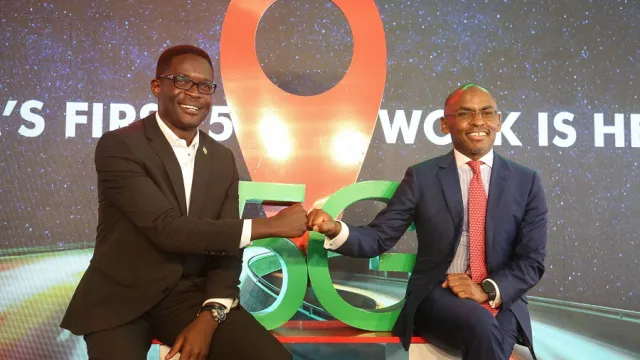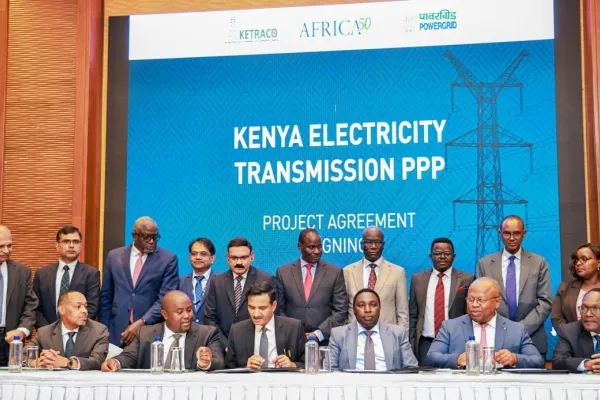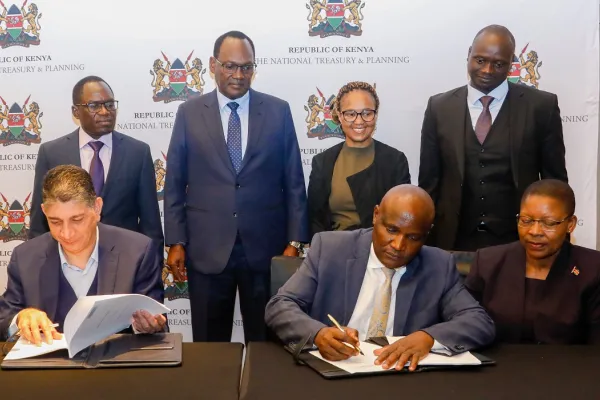Safaricom’s next-generation of wireless technology is ready for take-off

Safaricom’s next-generation of wireless technology is ready for take-off
You will be able to listen to 23,000 hours of music, 1000 hours of Netflix, or 1,400 hours of YouTube with no buffering just quality and instant.
These experiences will be offered through Safaricom 5G, the telco’s next generation of wireless technology that achieves browsing and download speeds about 10 to 20 times faster than 4G.
The telco is finally rolling out the ‘fast and furious; network, targeting homes and businesses with packages that will range from Sh3,499 to Sh14,999 a month.
Users will also be required to pay a one-off Sh25,000 installation cost with the Flexi option of paying over three years.
This new technology which was first piloted by Safaricom in Nairobi, Kisumu, Kisii, and Kakamega further expanded to 150 sites across nine towns over the last 12 months.
Safaricom and Nokia are powering East Africa’s first 5G commercial services with Nokia’s 5G Single Radio Access Network (SRAN) technology and 5G Fast Mile gateways which enable ultra-fast Fixed Wireless Access (FWA) services to Safaricom’s subscribers across Kisumu and the Western Province of Kenya.
It will allow users seamless video streaming, internet sharing, work from home capabilities among others, expanding the mobile ecosystem to the next level from integrating home appliances like your TV and fridge to your phone as well as shifting the viewer experience to virtual reality.
Read also: Huawei tips telcos on how to successfully deploy 5G
This will contribute to cutting-edge user experiences such as virtual reality (VR), seamless IoT capabilities, new smart home applications, local interactive content, and instant cloud access.
Businesses can also tap into this new technology with faster data speeds and superior network reliability.
5G will enhance businesses’ efficiency while giving users faster access to more information. Depending on the industry, some businesses can make full use of 5G capabilities, especially those needing the high speed, low latency, and network capacity that 5G is designed to provide.
This new superfast wireless technology will also provide a much more personalized web experience through a technique known as ‘Network Slicing’ which is basically a way of creating separate network layers on the cloud, thereby allowing users to create their own bespoke networks.
Mobile technology is defined by each generation network from 1G, 2G, 3G, 4G, and the current 5G which detail the technological implementation of a particular mobile phone system.
The speed increases and the technology used to achieve that speed also changes. For eg, 1G offers 2.4 kbps, 2G offers 64 Kbps and is based on GSM, 3G offers 144 kbps-2 Mbps whereas 4G offers 100 Mbps - 1 Gbps and is based on LTE technology.
5G offers ten times faster speeds than the current LTE speeds providing fiber-like connectivity in areas with no fiber coverage.
Kenya was mainly reliant on 2G which enabled cellular phones to use data along with a voice that introduced many of the fundamental services that we still use today, such as SMS, internal roaming, conference calls, call hold, and billing.
But 3G took the mobile phone to a whole new level, introducing web browsing, email, video downloading, picture sharing, and other Smartphone technology were introduced in the third generation
The 4G network pushed the envelope further providing high speed, high quality, and high capacity to users while improving security and lowering the cost of voice and data services, multimedia and internet over IP.
5G could achieve browsing and download speeds about 10 to 20 times faster than those offered through 4G.
That would allow a consumer to download a high-definition film in a minute or so. Mobile gamers will also notice less delay - or latency - when pressing a button on a controller and seeing the effect on screen. Similarly, mobile videos should be near instantaneous and glitch-free while video calls would become clearer and less jerky under the 5G network.



